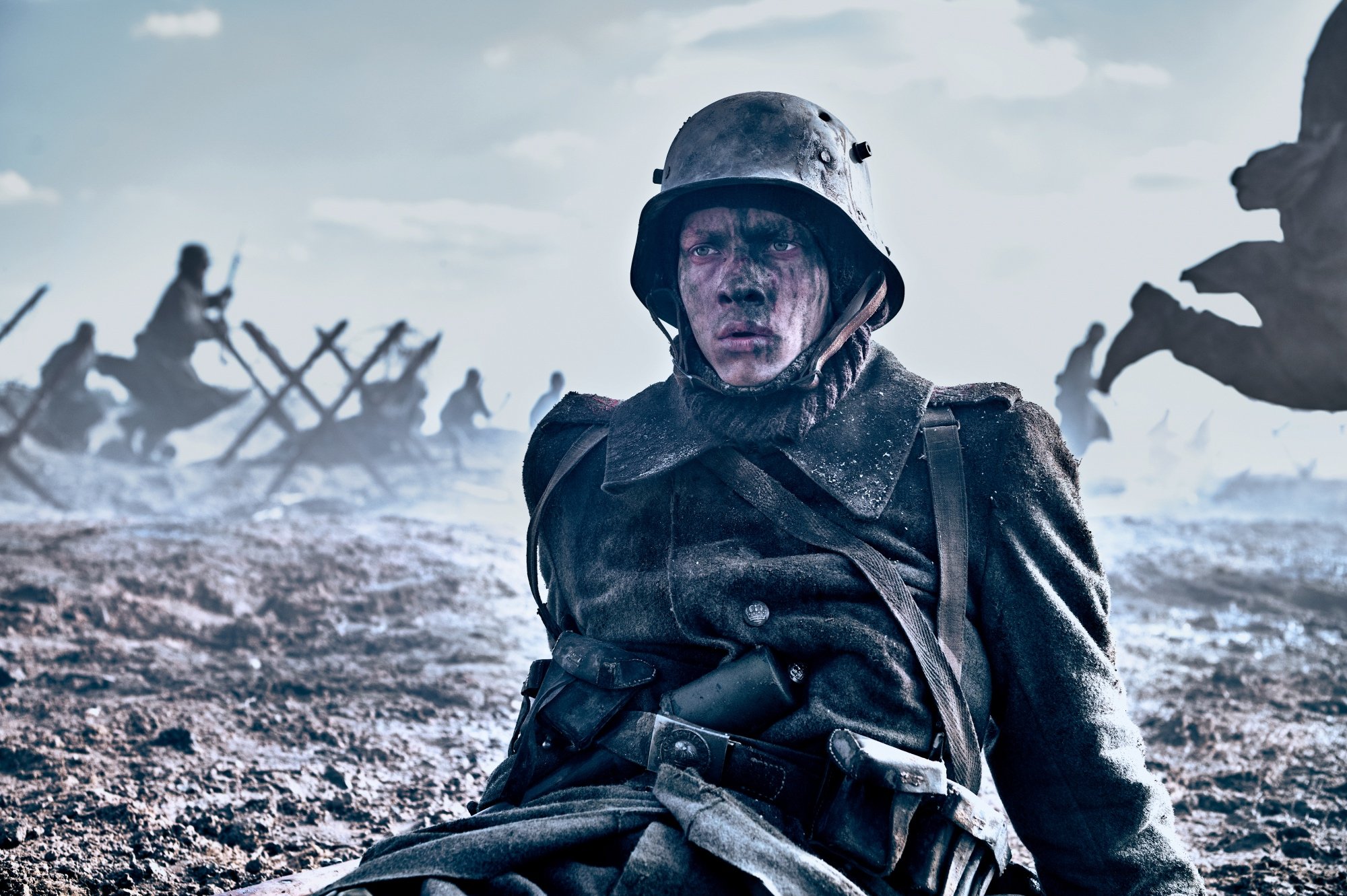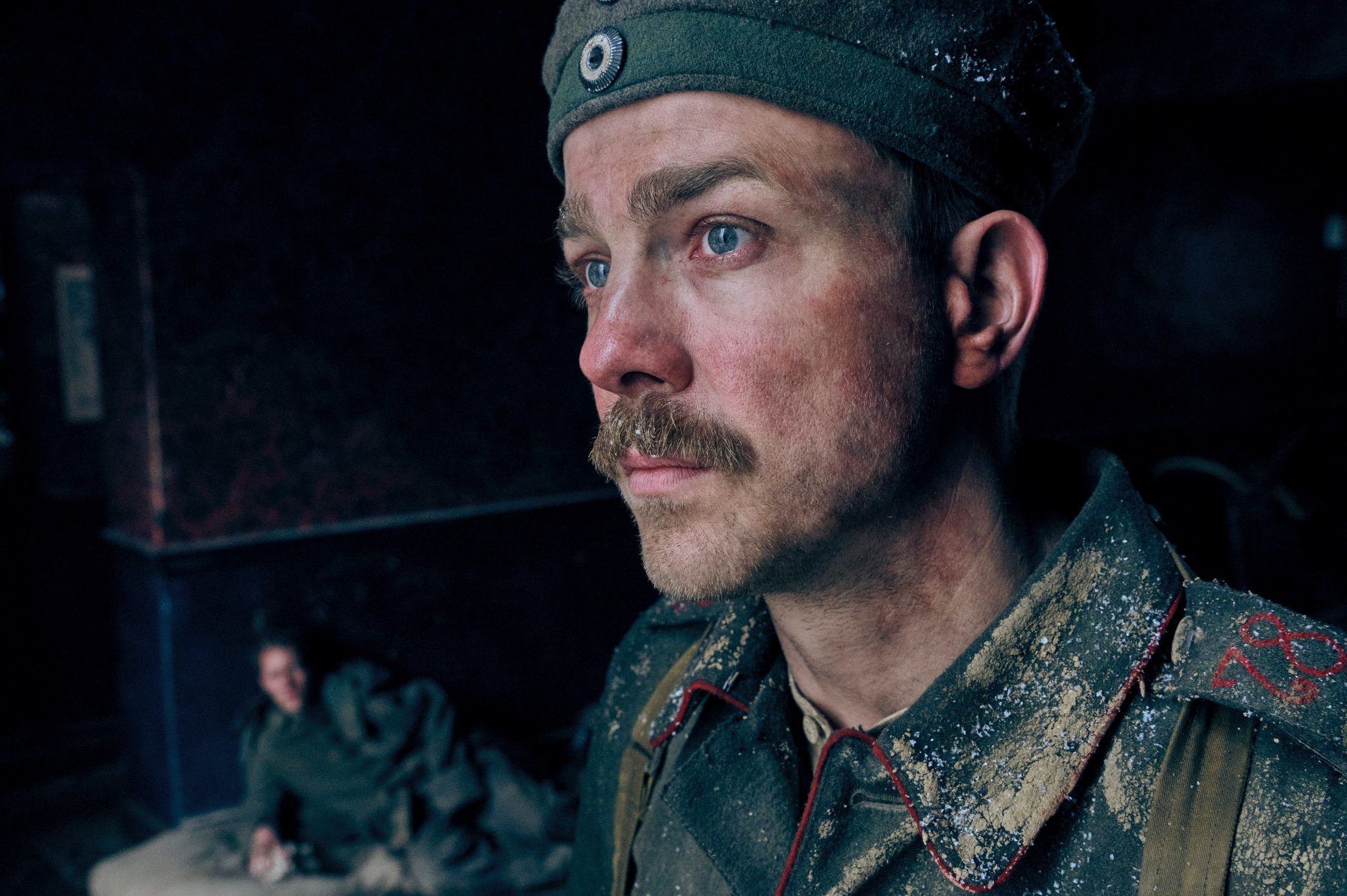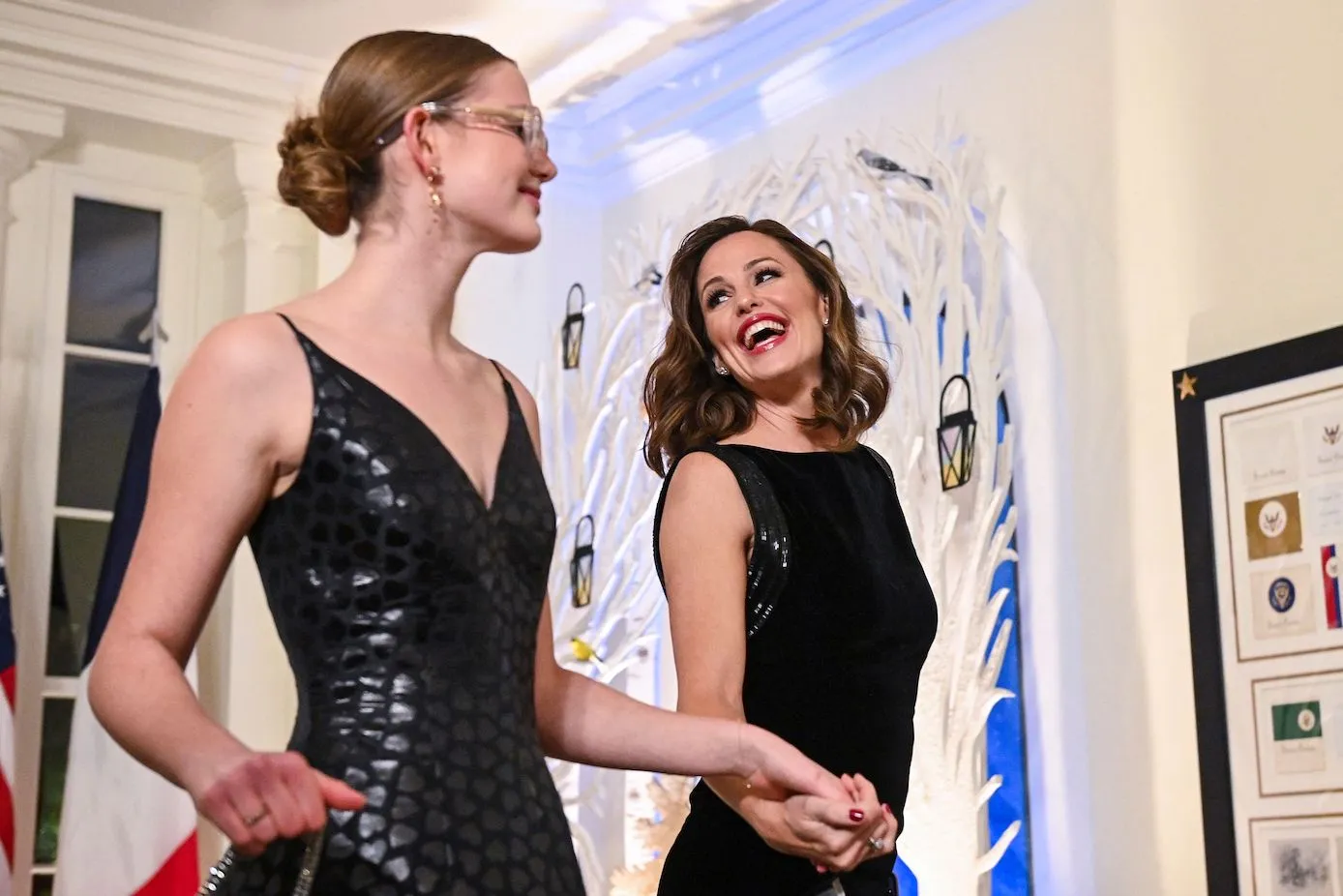
‘All Quiet on the Western Front’ Movie Review: Edward Berger’s Gut-Wrenching Adaptation Shocks the Senses
The 1930 adaptation of All Quiet on the Western Front rightfully won the Academy Award for Best Picture, but co-writer/director Edward Berger’s adaptation isn’t a remake. He takes another look at the classic anti-war novel, but he introduces a modern cinematic framework to forge a new experience that still cuts as deep as a knife in the gut. It does more than pull you to the edge of your seat; it’s an absolute shock to the senses.

‘All Quiet on the Western Front’ is a re-adaptation of Erich Maria Remarque’s 1929 novel

Set in the year 1917, it’s wartime in Germany. Paul Bäumer (Felix Kammerer) wants to join his closest friends in serving their country via the military. His family disapproves, but he lies his way through the application process to get a place on the frontline. Paul and his gang celebrate all that’s to come, as their minds are filled with romanticized ideas of what they will face.
The group of young men has a quick wake-up call when they’re thrown into the harsh world of the trenches. They have few resources, minimal training, and their potential death waiting at any moment. Paul develops a close relationship with an older veteran named Kat (Albrecht Schuch), who tries to help him from meeting his end too quickly.
Co-writer/director Edward Berger depicts the often unspoken costs of war
All Quiet on the Western Front stays true to its title, opening on the dead silence of a foggy landscape, which is suddenly interrupted by the explosive sounds of war. The consequences of war are promptly accented, as the body count continues to mount. Berger takes the audience on several journeys over the course of the runtime, mostly obviously Paul and his buddies. Metaphorically, repurposed military outfits and German dog tags go on their own adventures that don’t end when their wearers die.
Paul and the other youngsters are disturbingly thrilled at the thought of joining the war thanks to propaganda and promises of heroism from current soldiers. However, they quickly discover the brutal conditions of war that extend far beyond the fear of dying at the hands of an enemy soldier. Freezing weather conditions, a severe lack of food, and trenches overflowing with rainwater are just some of the obstacles that they must face. Berger juxtaposes the battlefield with the government and senior officers’ comfortable quarters. Food is a common motif, displaying the lack thereof for the soldiers and the extravagance in feast options for those behind the scenes who use human lives as pawns to fight their war.
All Quiet on the Western Front emulates how different soldier personalities handle the war in varying ways. Some are desperate to return home to their lives, while others never want the war to end, as it gives them a sense of purpose. For those folks, the cause that they’re fighting for is irrelevant. Finally, there are soldiers who are more afraid of what’s to become of them after the war, should they survive.
‘All Quiet on the Western Front’ is a relentless anti-war exemplar

Much like the film’s abrupt disruption of silence, Berger generates a substantial contrast in how he shot the film. He uses stationary close-ups to create intimacy between the characters and the audience in the narrative’s most dramatic moments. Then, Berger switches to dynamic, movement-heavy direction during combat. Cinematographer James Friend brings a cold, blue palette to the screen that is constantly jaw-dropping in its ability to depict both the beauty in the story’s few warm moments and the bleakness in Paul’s ever-growing despair.
All Quiet on the Western Front is sound design perfection. It’s an all-encompassing experience that puts the viewer directly into the heat of war. Volker Bertelmann’s haunting score superbly fits the film’s intensity, as explosions, gunfire, tanks, and fire fill the soundscape. However, there are also incredibly impactful moments of silence and experimentation with dialogue that successfully aids in building the atmosphere.
Kammerer’s performance acts as an anchor for the film. All of the physical and emotional brutality that unfolds changes Paul forever. He says so much with a simple glance that digs under the skin deeper than dialogue ever could. Schuch’s Kat is also wonderfully nuanced, as the two share the film’s most poignant moments that read as entirely sincere.
The 1930 adaptation will always remain a classic, but Berger successfully brought his version to life with modern techniques and technology. Audiences will still be able to enjoy it from the comfort of their own home on streaming, but it’s a stellar theatrical experience for those who are able to see and hear it on the big screen. All Quiet on the Western Front is a relentless exemplar of tremendous anti-war filmmaking that exhilarates on every level imaginable.
All Quiet on the Western Front is now playing in select theaters and streams exclusively on Netflix starting on Oct. 28. The film was announced as Germany’s entry for the Academy Award for Best International Feature Film at the 95th Academy Awards.


